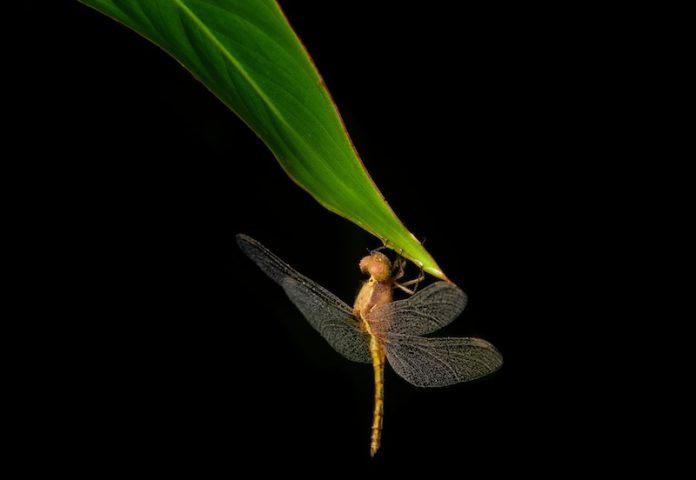
Biologists at the University of Colorado have uncovered an interesting survival strategy among dragonflies in increasingly warm and dry climates.
Their research, featured in the Proceedings of the National Academy of Sciences, shows that dragonflies with a waxy coating, known as pruinescence, have a better chance of thriving under these challenging conditions.
Michael Moore, Sarah Nalley, and Dalal Hamadah spearheaded this innovative study, delving into the behaviors and adaptations of dragonflies across dry regions of North America.
Dragonflies, intriguing for their beauty and aerial agility, have long fascinated scientists with their survival tactics. A particular focus has been on their production of a waxy substance spread across their bodies.
This wax plays a critical role in preserving body moisture and preventing overheating, essential for survival in hot, arid environments.
The study meticulously examined the courtship behaviors of 319 dragonfly species, revealing two distinct strategies. Some males adopt a “perching” behavior, positioning themselves in sunny spots to attract female attention, despite the risk of increased body temperature.
Others prefer a “wait-and-see” approach, staying on the move and taking frequent breaks to cool down and hydrate. Intriguingly, the researchers discovered that pruinescence is more common among the perching dragonflies compared to their more mobile counterparts.
To further explore the relationship between pruinescence and environmental adaptability, the team compiled a comprehensive database of 387,000 dragonfly records, focusing on the occurrence of this waxy coating.
Their analysis confirmed that dragonflies with pruinescence are predominantly found in warm, dry areas and appear to be coping better with the conditions brought on by climate change than those without this protective wax.
This study not only sheds light on the evolutionary advantages of pruinescence in dragonflies but also suggests that similar adaptations might be aiding survival in other insects facing the challenges of a warming world.
The findings challenge conventional evolutionary theory, which often views mating behaviors as potential survival constraints. Instead, these behaviors, intertwined with physical adaptations like pruinescence, may play a crucial role in the resilience of species to environmental changes.
The research findings can be found in PNAS.
Copyright © 2024 Knowridge Science Report. All rights reserved.



